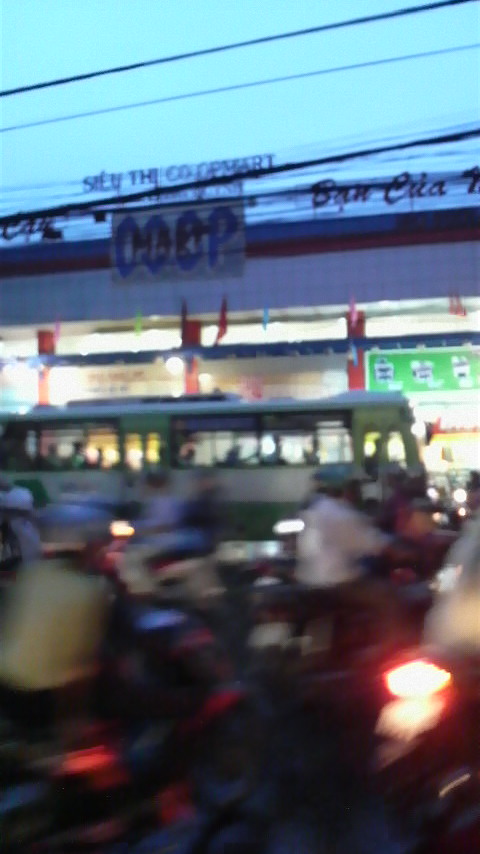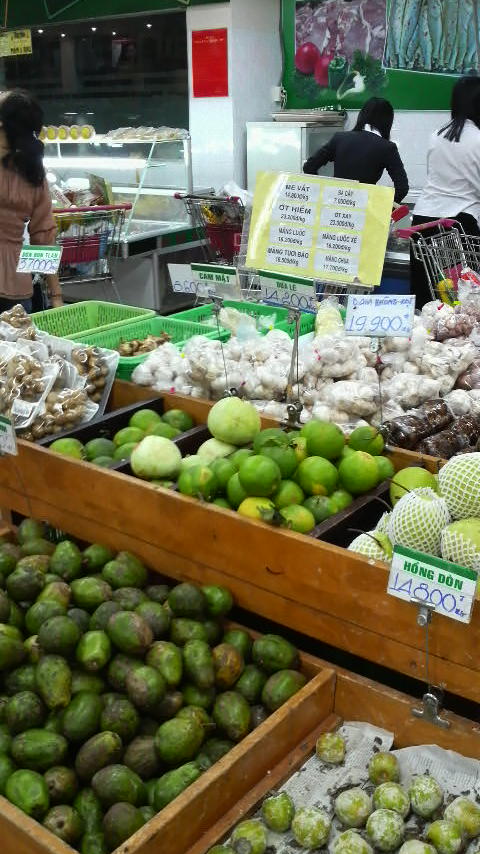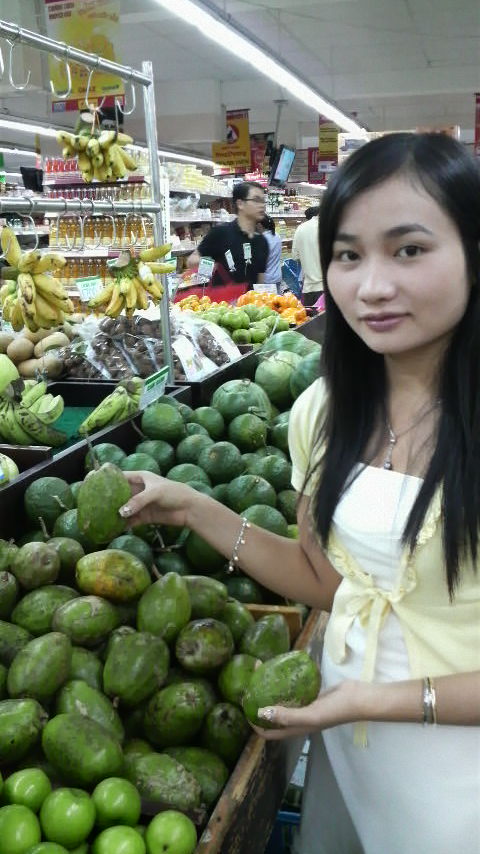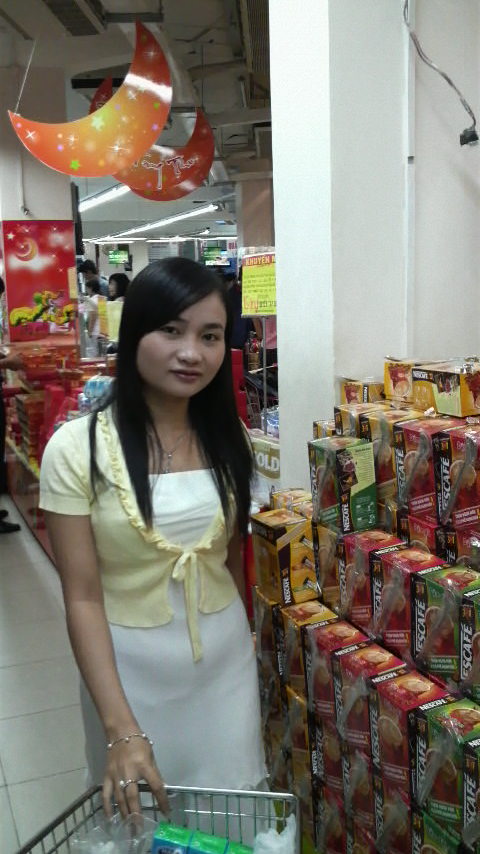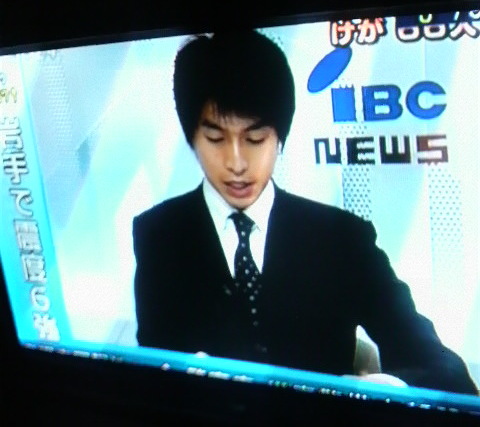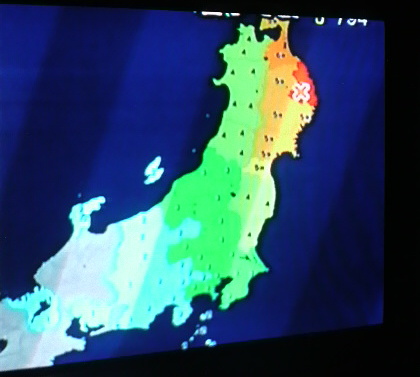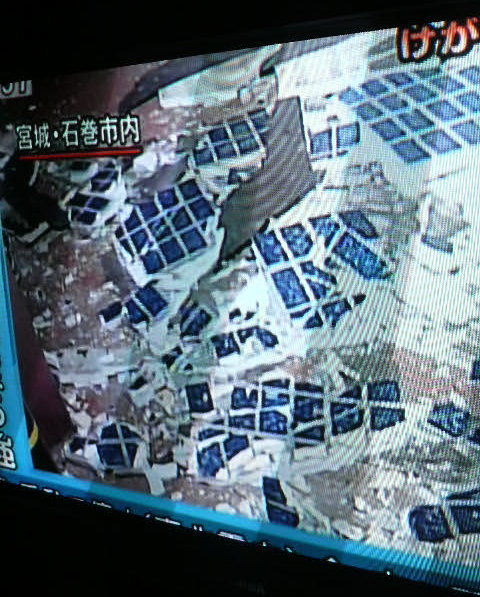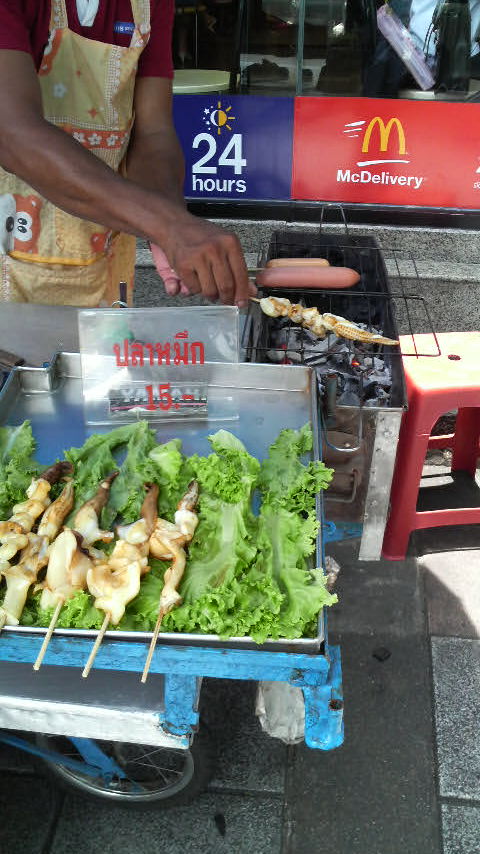 |
| Squid for 15 Baht a stick, and sausages on the street outside McDonald's, near the Democracy Monument (Thailand, 2008) |
Wrote one Matthew Amster-Burton, back in the year 2000: "The typical Thai breakfast is rice porridge, but vendors offered plenty of atypical selections as well. One woman whose cart stood near the Democracy Monument on Thanon Ratchadamnoen Klang was pouring perfect silver-dollar, and smaller (1 baht?) pancakes onto a griddle. And one of the most beloved foods in Bangkok is ice cream. McDonald's offers a standard soft serve cone for 7B and Baskin-Robbins fights back with its "Teen Scoop", but the street vendors really get weird, piling three scoops of vanilla onto a hot dog bun and topping it with corn kernels or red bean paste. McDonalds, I should add, offers its pies in three flavors: pineapple, taro, and corn..."
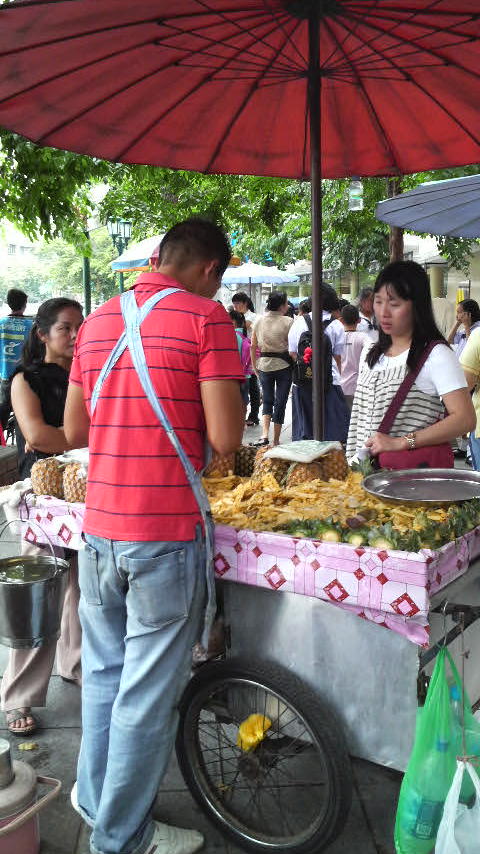 |
| Fresh fruit always goes down a treat on hot summer days (Thailand, 2008) |
As I said earlier, I have never eaten these Simpsonish sausages in Bangkok. The next time I am there, I might very well partake! You only live once, and there is no room for food snobbishness in this world!

